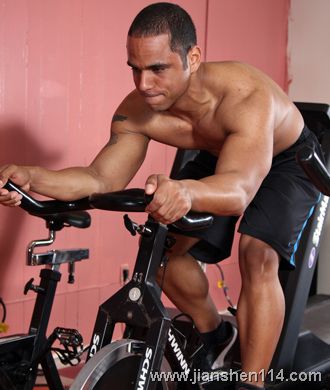How to train after leg injury
**Systemic Functional Training Program**
The X section serves as an auxiliary training component, typically performed after the main exercises. Its primary purpose is to prevent injuries. For example, if someone experiences knee pain during squatting, they should avoid the main training and replace squats with a similar movement. This is where the X section comes into play.

**Quadriceps Training**
This exercise can be a great alternative to sitting leg lifts, especially for those with knee injuries. Traditional leg flexion and extension may cause discomfort, but this movement effectively targets the quadriceps with minimal pressure on the knees, promoting better knee joint stability.
**Key Points:**
- Similar to a plank position.
- Knees at 90 degrees, about 2 cm above the ground.
- Keep your back straight, hands on the floor, elbows slightly bent, and breathe evenly.
- If you have a knee injury, you can train on one leg.
- Adjust the duration based on your ability and progress gradually.

**Leg Lift – 12 Reps × 4 Sets**
This exercise is ideal for individuals with knee injuries. The machine simulates the feeling of stepping on the ground, reducing knee strain while still effectively working the legs and glutes.
**Key Points:**
- Sit on the machine with feet positioned correctly to avoid unnecessary knee pressure.
- Lift the pedals using your feet, loosen the leg lifter’s lock, and keep your core stable.
- Control the movement by bending your knees slowly and bringing your thighs close to your chest, with your knees at a 90-degree angle.
- Return to the starting position and repeat.

**Balanced Air Cushion Exercise**
Unilateral instability exercises are excellent for improving ankle joint stability. By incorporating different angles, you can also help prevent future ankle injuries.
**Key Points:**
- Always maintain a slight bend in the knee.
- Engage your core and control each movement carefully.
- It may be challenging at first, so start with stabilization exercises and build up over time.

**Rope Muscle Practice – 15 Reps × 4 Sets**
This exercise is highly beneficial for protecting the lower back and knee ligaments. It helps improve overall strength and flexibility.
**Key Points:**
- Lie flat on the mat with arms extended and legs straight.
- Place your heels on a Swiss ball.
- Push the ball toward your body, engage your hips and legs, and control the movement as you return to the starting position.

**Resistance Side Step**
Approximately 90% of people overlook this crucial movement for knee stability. Whether you're into sports like surfing, skiing, or playing football and basketball, this exercise can significantly improve your balance and stability.
**Key Points:**
- Secure an elastic band around your calf or knee.
- Begin with a slight knee bend, engage your core, and stand tall.
- Move sideways like a crab for 10 steps on each side.
- If your glutes feel sore, that's a good sign that the workout is effective.
- Remove the band and jump left and right a few times to feel the increased stability.
This comprehensive functional training program not only enhances muscle strength but also supports joint health, making it a valuable addition to any fitness routine.
Pu notebook pouch,Cloth notebook pouch,notebook pouch for students,customizable notebook pouch
Lion Paper Products (Jiaxing) Co.,Ltd , https://www.lion-paper.com